After I started on this month’s article, I decided to make it Part 3 of the series – Displays for the Brain

As I described in Part 1, Part 2, and some of my previous articles, many VR/AR and light field displays make the brain very tired. As a result, the goal is to develop configurations and schemes such that the images can be perceived to be as natural as possible. One such effort was presented in the Paper 4.3 of SID 2017 from Stanford University and Dartmouth College dealing with the vergence/Accommodation issues. The idea is to digitally locate the object to be viewed and adjust the focusing lenses such that the object will be focused by the user at the object location, instead of at the constant location of the fixed lens/display combination in traditional AR/VR viewers. This allows the focusing of the eyes and convergence of the eyeballs consistent with the natural viewing of the object. (The author has a pending patent on this subject. Interested parties are urges to contact the author for further details).
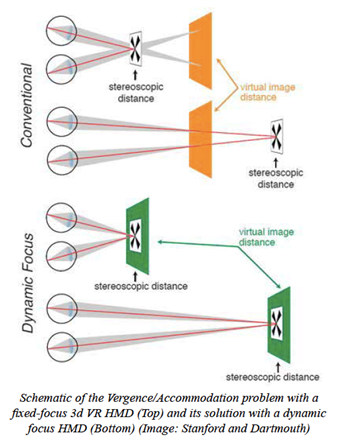
A couple of other papers were also presented at the SID Conference regarding Aerial Displays and Light Field Displays. There were several descriptions by the author and others regarding light field displays and that has been the major thrust of recent developments. On the other hand, aerial displays or floating image displays have been of interest also for a long time and it seems that it has started to catch the attentions of many, recently. The basic idea behind an aerial display is the transfer of the location of an object, usually a physical object, to another location as a floating image when viewed by the user. The light emitted by each point on the object will be transferred to the floating image location with the same relative positions such that a floating image is formed. The user who is viewing the floating image will have the full vision of the object as if the object is really there at the floating image location. The device in the following picture is the Mirage 3-D Instant Hologram Maker sold in Amazon.com uses the principle described above such that when an object is placed at the bottom of the device, the floating image of the object will appear on top of the device. This device was developed decades ago and was sold in game shops, gift shops, etc.
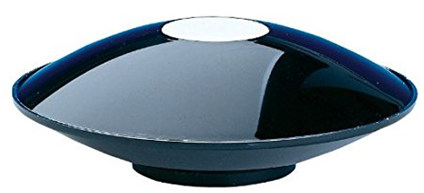 This instant hologram maker can be bought on Amazon (http://tinyurl.com/ycjaq3vq)
This instant hologram maker can be bought on Amazon (http://tinyurl.com/ycjaq3vq)
Mitsubishi and Utsunomiya University in Japan also reported a much larger scale of the floating image system at SID where a real size person can apparently float in front of an observer. The use of retro-reflector array instead of true optical surfaces allows such large objects and images to be implemented. The price to be paid is the resolution, which will be in the order of the size of each retro-reflective element in the array.
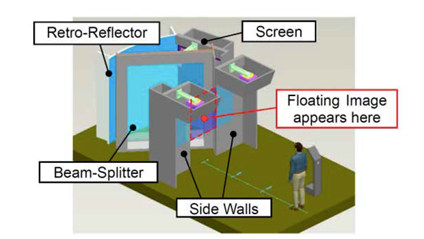 Mitsubishi highlighted this floating image system at Display Week.
Mitsubishi highlighted this floating image system at Display Week.
In another paper from Tsukuba University, the researchers describe an autostereoscopic display with a twist. My take on this paper is that the double Fresnel lens system “floats” the display image from one side to the other with the issue being that it is spherical rather than “flat”. Such an aberration is the intrinsic property of the imaging system, which can be corrected, at least partially, as presented. On the other hand, would it be nice if such a system could be implemented with a lens system that does not create the spherical surface, but remains flat. T(Again, the author has a pending patent for such an optical in which the floating image is flat instead of spherical.)
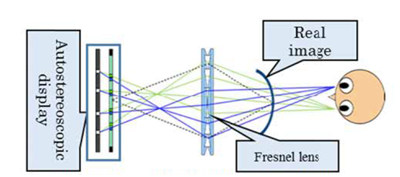 Tsukuba University has a 3D concept
Tsukuba University has a 3D concept
Another system that produces a floating 3-D image is being developed by Asukanet in Japan using two linear arrays of reflectors positioned perpendicular to each other. It is described with the original scheme in the US Patent 8,702,252 using the perpendicular linear reflector array. The viewing axis is at an angle to the normal of the arrays as shown.
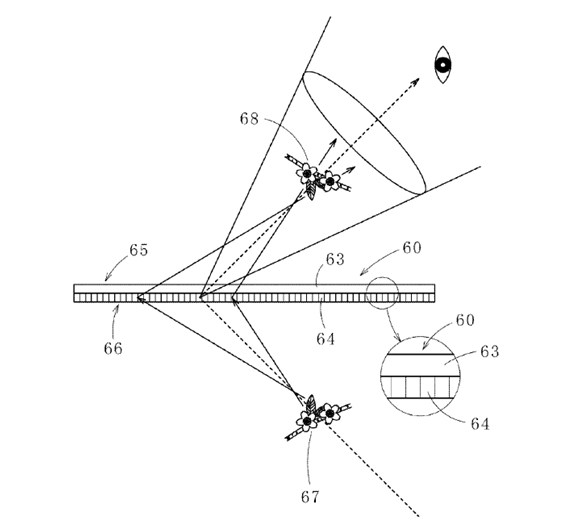 Original Scheme used by Asukanet
Original Scheme used by Asukanet
The latest development from Asukanet is described in the US Patent 9,618,757 using a complex array of “cubic corner bodies”. The resolution of the system is determined by the spacing of the reflectors in both directions. This new system has made the improvement in which the viewing axis is perpendicular to the array of cubic corner bodies.
 Asukanet’s most recent scheme
Asukanet’s most recent scheme
Instead of real physical objects, these aerial floating imaging system can also be used with LCD display in both 2D and 3D versions. As a result, the user will be seeing a floating image of the flat screen display in mid air, making the viewing experience more realistic and since the image is floating, it is also possible for the user to interact with the floating image. With proper camera systems, 3D inputs from the user can be obtained.
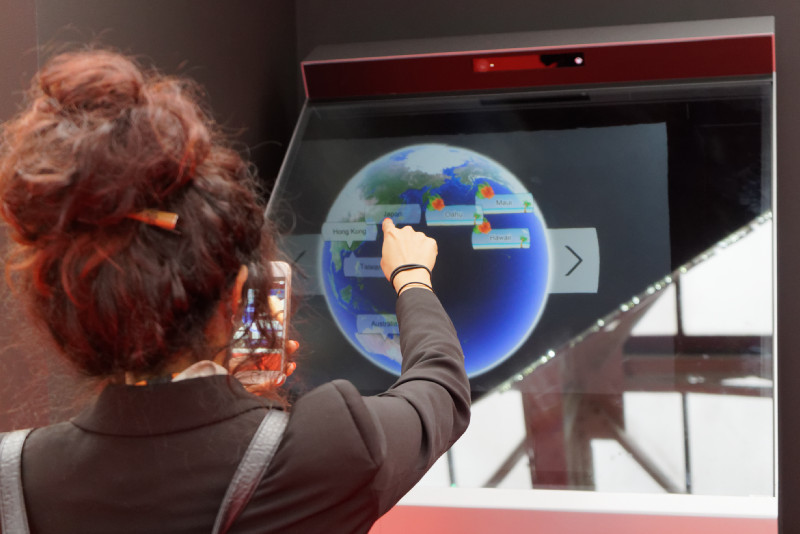 Asukanet showed this display at the Digital Retail Show in London and again at Infocomm. Image:Meko
Asukanet showed this display at the Digital Retail Show in London and again at Infocomm. Image:Meko
Enquiries regarding the author’s pending patents and questions about this article can be emailed to [email protected] — Kenneth Li.

